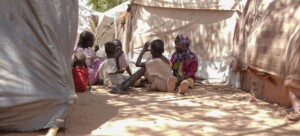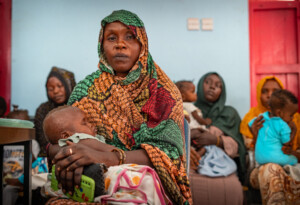Cases of dengue fever* have appeared in North Kordofan, while North Darfur continues to suffer from large numbers of dengue and malaria cases and Khartoum state is monitoring a rise in malaria cases in some localities. No cases of Ebola have been reported in Sudan so far.
The Minister of Health in North Kordofan, Ibrahim El Ansari, reported that until Monday, two people have died from dengue fever in the state. 13 cases of infection are still in isolation centres.
He told Radio Dabanga that the fight against dengue fever depends on awareness. A week ago, the government of North Kordofan announced a 14-day holiday in an attempt to prevent the spread of dengue fever.
In North Darfur, the Ministry of Health reported a significant increase in dengue and malaria, reaching 570 suspected cases and 239 confirmed cases of dengue fever. The total number of malaria cases reached 916 this week.
Mohamed Idris, Director of the Ministry of Health, appealed to the federal government and international organisations to urgently intervene to limit the spread of the highly infectious diseases in a report to Governor Nimir Abdelrahman on Tuesday.
On the same day, the Health Promotion Department of the Ministry of Health in North Darfur organised an awareness campaign to promote infectious disease awareness in a number of schools in El Fasher. The campaign includes spraying classrooms, offices, and bathrooms with pesticides to combat disease spread.
The Khartoum state Ministry of Health also reported an increase in malaria infection rates in a number of localities, according to the Sudan News Agency. Rates have decreased in other localities.
Bashir Adam Ismail, Director of the Malaria Department of the General Administration of Preventive Medicine, said that out of 26,460 people, 3,696 tested positive for malaria.
About 348,700 people have been affected by rains and floods across Sudan this year, according to UN OCHA. Recent flooding may be a leading cause of the spike in dengue and malaria cases, as standing water left after floods and rains can lead to an increase of mosquito breeding.
Late September, the Director-General of the Ministry of Health in North Darfur said that there is a marked increase in cases of diseases associated with autumn compared to this time last year.
The federal Ministry of Health confirmed on Sunday that no cases of Ebola have been recorded in Sudan.
Montasir Osman, Director of the Health ministry’s Emergency and Epidemic Control Department, gave a speech during a workshop organised by the ministry in cooperation with the World Health Organisation. He said that the ministry is about to send rapid response teams to all states of Sudan to help the states to check for and prevent spread of the disease.
He said that the campaign aims to raise the health sector’s capability to undertake epidemiological monitoring and effective infection control of the Ebola virus.
* Severe forms of dengue fever, also called dengue haemorrhagic fevers, are severe acute viral infections, usually with a sudden onset of fever, malaise, headache, and myalgia followed by pharyngitis, vomiting, diarrhoea, skin rash, and haemorrhagic manifestations. The outcome is fatal in more than 50 per cent of the cases, the World Health Organisation reports. Among the fevers recently recorded in Sudan are dengue fever and Rift Valley fever (RVF). Viruses that cause dengue fever are transmitted by mosquitoes. RVF can be acquired either by a mosquito bite or by direct contact with blood or tissues of infected animals (mainly sheep), including consumption of unpasteurised milk.
 Image of Malaria Plasmodium vivax (File photo)
Image of Malaria Plasmodium vivax (File photo)











 and then
and then